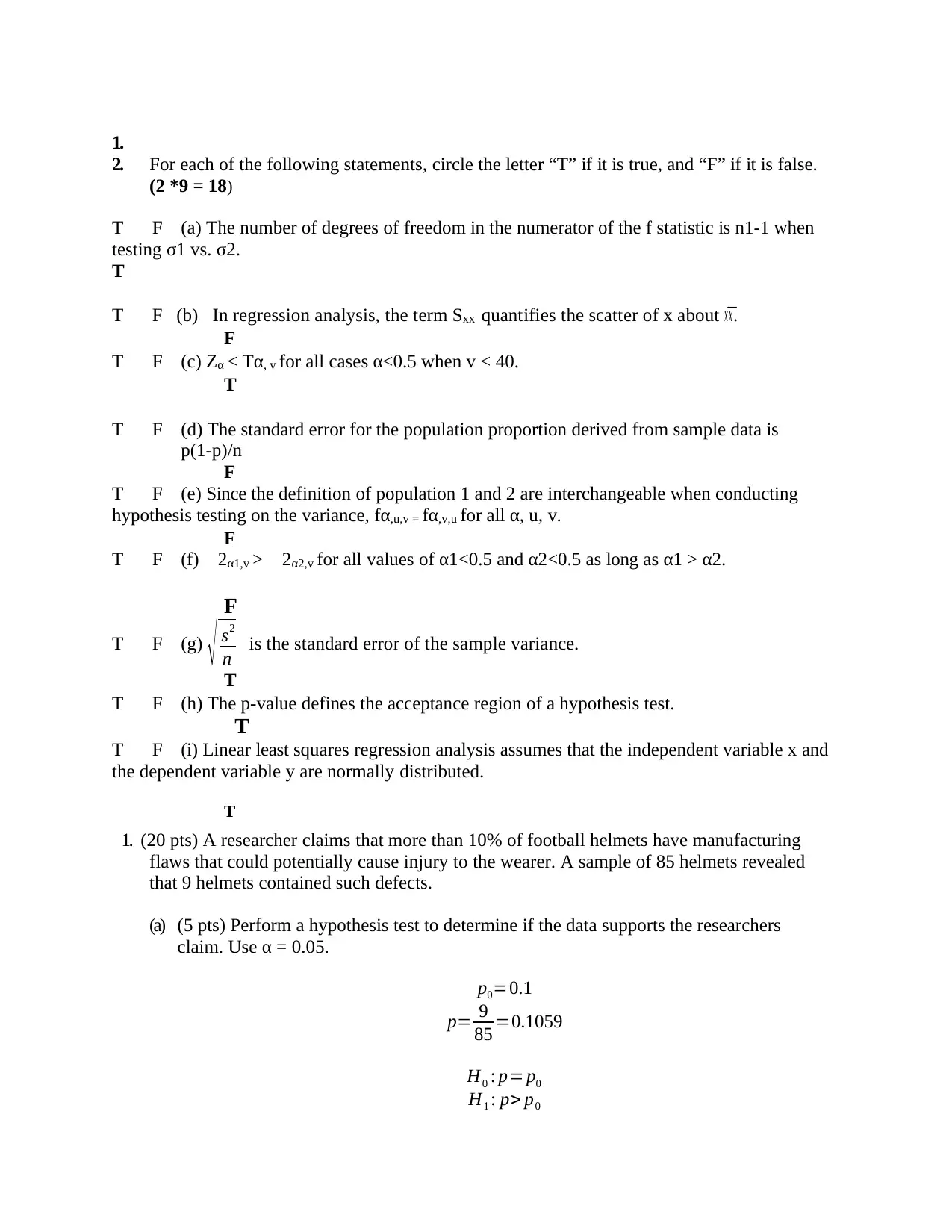ECI 114 Statistics Final Exam Winter 2020 - Problems and Solutions
VerifiedAdded on 2022/08/25
|2
|454
|18
Quiz and Exam
AI Summary
This document presents the solutions to the ECI 114 Winter 2020 final exam in statistics. The exam covers a range of statistical concepts, including hypothesis testing, confidence intervals, and power analysis. The solution begins with a true/false section assessing understanding of fundamental statistical principles. Following this, the document provides a detailed solution to a problem involving hypothesis testing related to manufacturing flaws in football helmets. This includes calculating the test statistic, making a conclusion based on the p-value, constructing a confidence interval, and calculating the power of the test and the required sample size to achieve a specific power level. All steps are shown with final answers highlighted.
1 out of 2





![[object Object]](/_next/static/media/star-bottom.7253800d.svg)